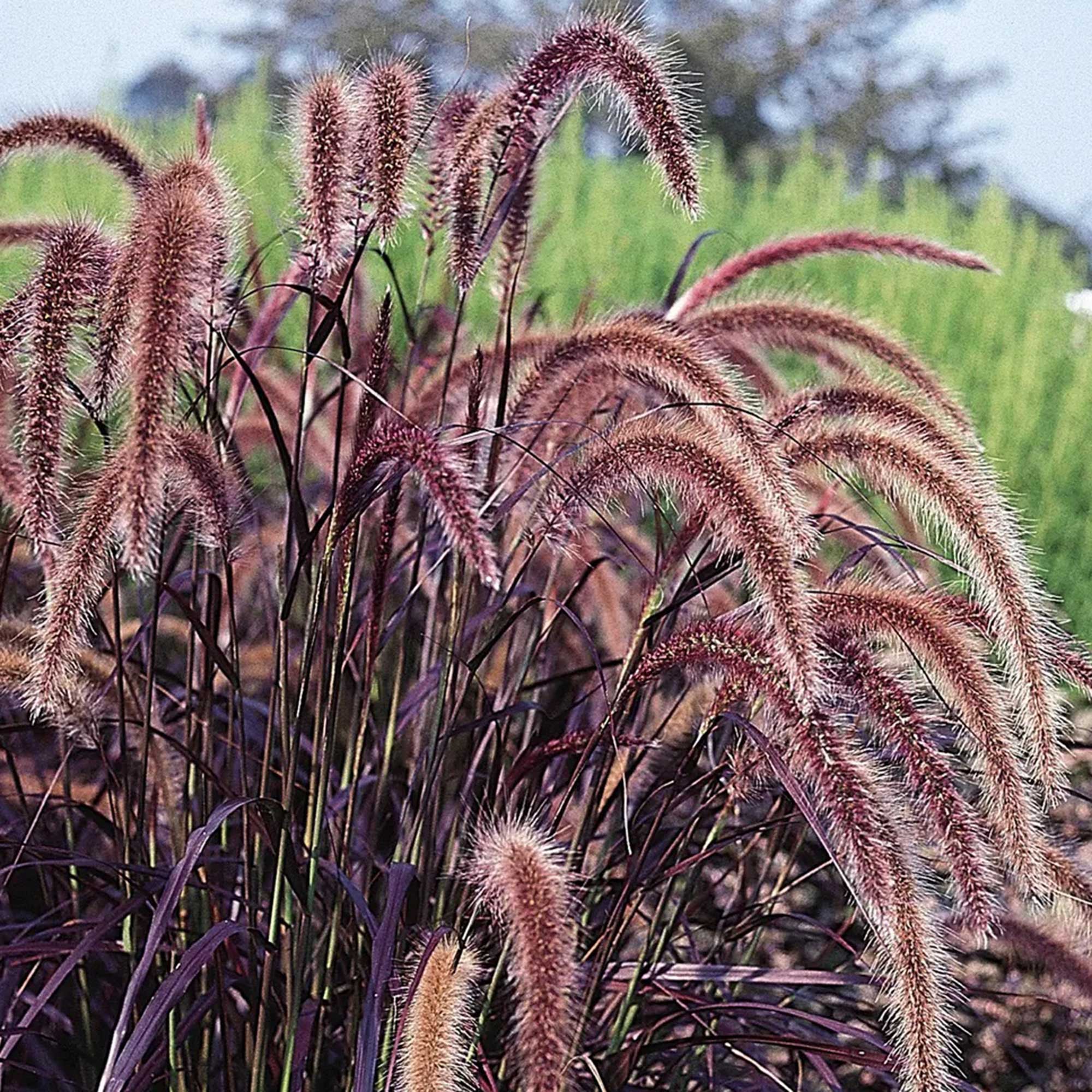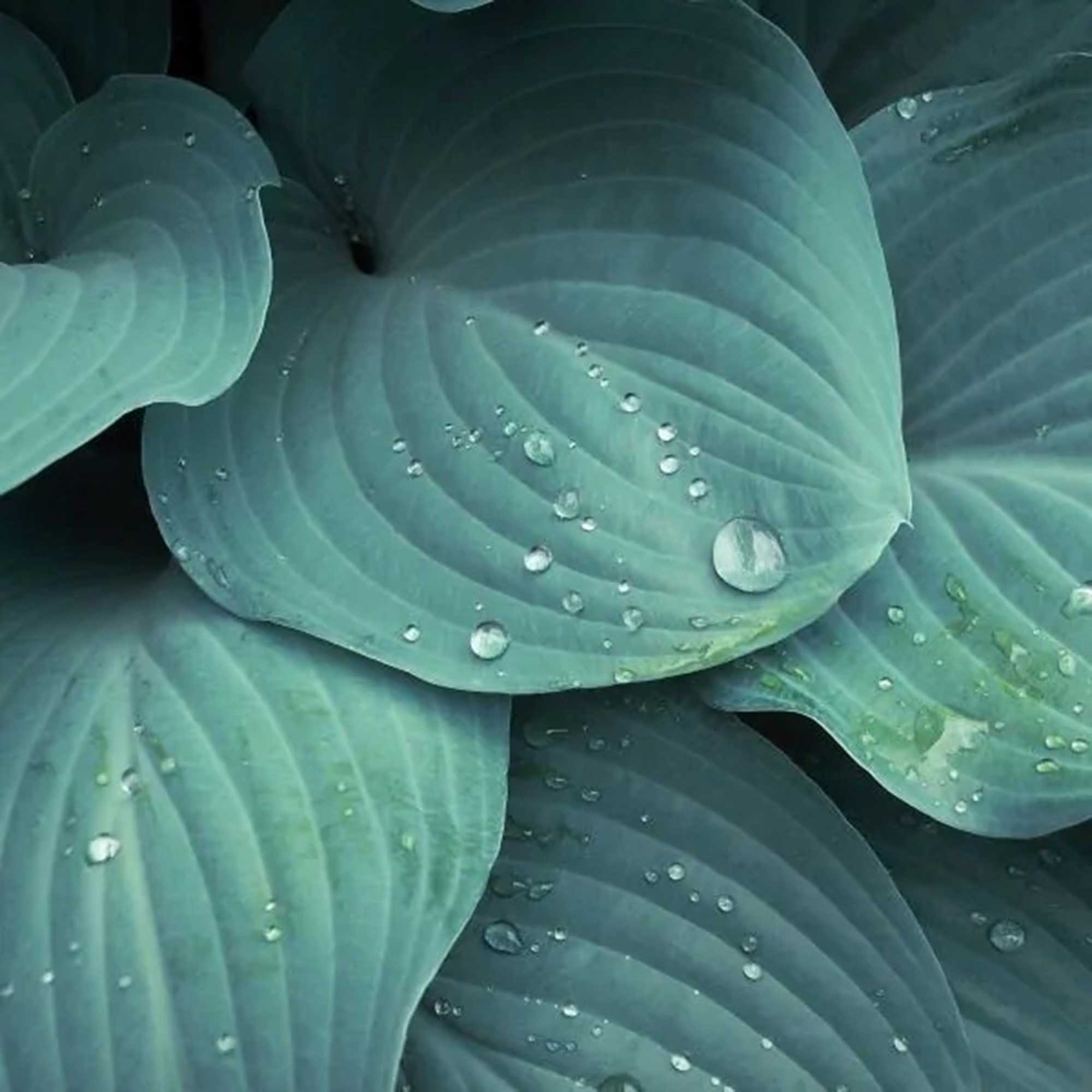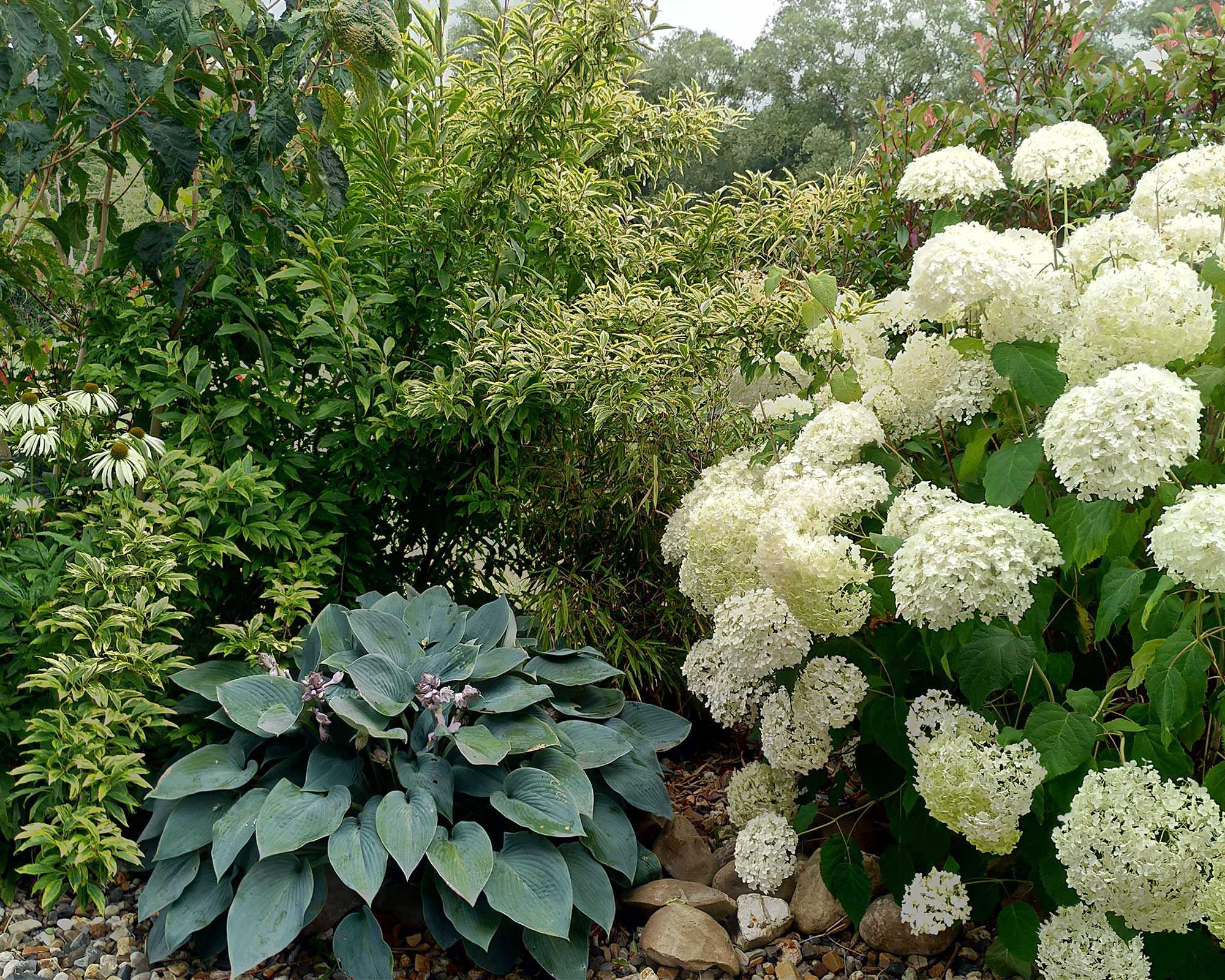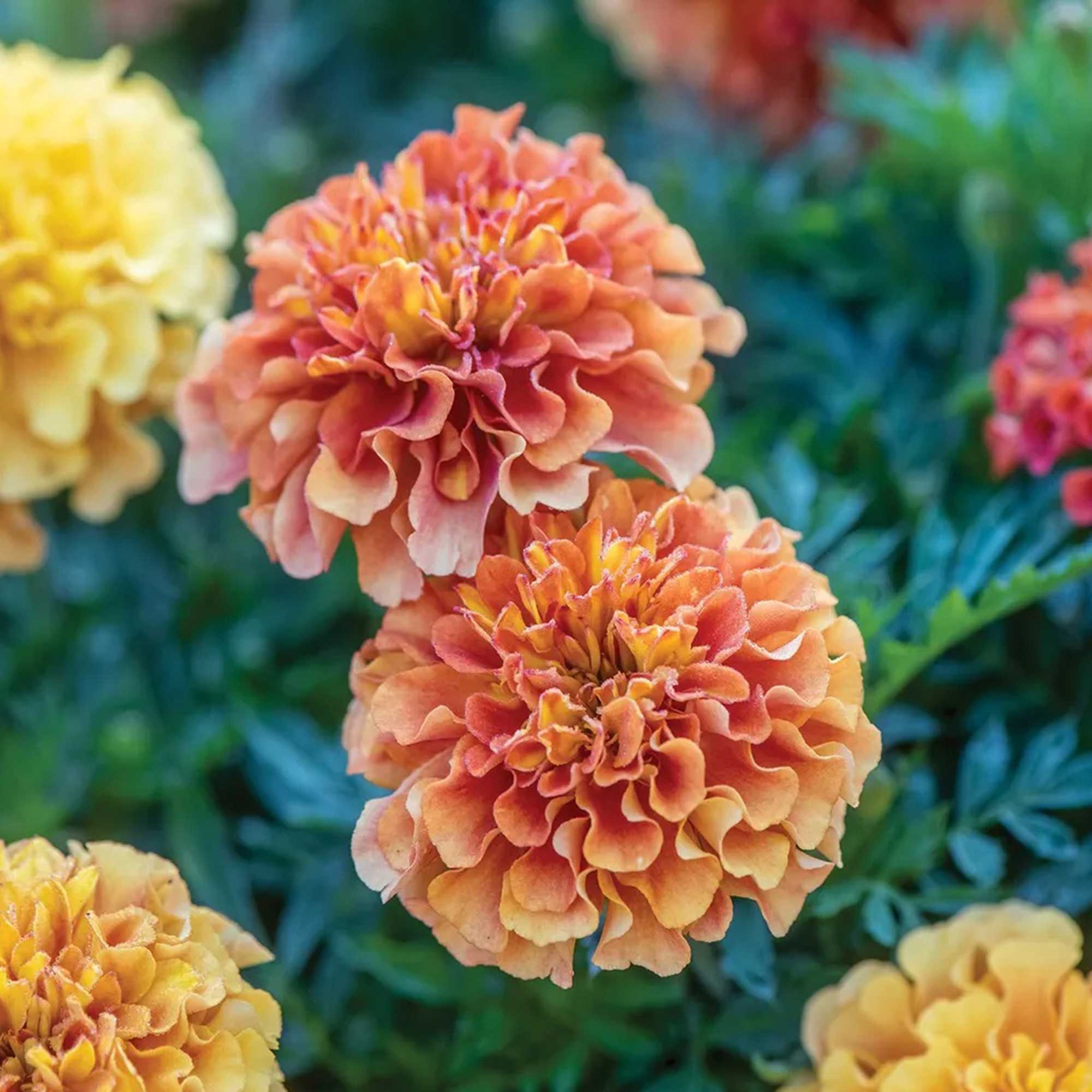Annual vs perennial plants – do you know the difference?
We explain the benefits and drawbacks of both, so you can plan your next garden border with confidence


Choosing between annual vs perennial plants may have you confused. These words are often thrown around in gardening, but knowing what they actually mean is super useful when deciding what to grow, especially if you're planning a new planting scheme.
Basically, it's all about the length of their life cycle – some plants are long-lived, and some are not. So, whether you want flowers, shrubs, or trees in your garden border, knowing whether they're perennials or annuals will help you know what to expect.

What is a perennial plant?
Perennials can be trees, shrubs, climbers, or border plants, explains the experts from Amateur Gardening magazine.
Unlike annuals, they continue to grow year after year, provided they're given the right care. This makes them stalwart plants when planning a flower bed, and they should be planted with plenty of space around them to accommodate their growth.
If the plants you have in mind are not evergreen, the stems will die back in winter to crown buds an inch or so above the soil surface, the Amateur Gardening team explains. These are known as herbaceous perennials. 'In spring, when the temperature rises, buds that have been dormant over winter will spring into growth.
'The only time you need to divide a perennial and replant vigorous outer portions is when the center of the plant weakens and dies,' they continue. This is usually done in spring or fall. The exception is if your plant is simply too big for its space, in which case it can be split into more manageable-sized sections and replanted.

Common examples of perennials include roses, lavender, and many spring bulbs, but there are lots more. There are perennials for every garden situation, as long as you take their individual needs, such as preferred soil type, into account. While some need some attention – feeding, pruning and the like – to keep them looking their best, there are many low-maintenance plants that can be more or less left to their own devices once established.
John Negus, an expert from Amateur Gardening, suggests low-maintenance shrubs for easy-care borders, most of which can be planted relatively cheaply as bare roots. 'You can get a mix of attractive features to give interest all year round – think evergreen foliage, spring color, flowers, fruits and autumn color,' he says.
While annuals generally prefer full sun, a wide selection of perennials are shade-loving plants, or will at least thrive in dappled light. Carpeting perennials, such as blue-flowering Ajuga reptans ‘Caitlin’s Giant’ can be valuable for filling tricky spots. Dicentra formosa, which has dangling, heart-shaped lockets in spring and early summer, is another good pick for shadier areas.
Other top perennial picks from the experts:

It's pretty, it doesn't need much maintenance and is easy to grow, says Stacie, a head groundkeeper in Texas and advisor at Patio Productions. 'Just give it some sun, water it occasionally and enjoy!' This purple variety is a particular show-stopper.

Lupines come in a wide variety of colors, and they attract hummingbirds and butterflies, says Lindsey Hyland, gardening expert and the founder of Urban Organic Yield. 'They also have a long blooming period.' Try this mix in a cottage garden scheme.

'Hosta is a great choice for those looking to add a touch of foliage to their gardens,' says Taylor Galla of Gardenaider.com. 'This perennial has large, heart-shaped leaves and produces bell-shaped flowers in the summer.' It's low maintenance and shade tolerant – and we love this blue-hued variety.
When should you plant perennials?
According to the RHS, container-grown perennials are best planted in spring or fall, when the ground is warm and moist. Avoid planting in freezing conditions, or if the soil is waterlogged. Watering the plants regularly will help them establish.
Planting bare root plants should be done as soon as you get them – this is usually in fall or winter, adds the RHS.

What is an annual plant?
Annuals are short-lived plants, completing their entire life cycle in just one year. But that's no reason to dismiss them from your backyard plans. They are valuable for bringing a splash of color to flower beds, filling in gaps between perennials, and attracting wildlife to your garden.
There are both hardy and half-hardy annuals available, all of which bloom from mid to late summer. They are lovely cutting garden flowers, and can even be grown to provide posies for special occasions. 'Some choice plants are agrostemma, Anchusa capensis, calendula, Centaurea cyanus, Linum grandiflorum, nigella and Scabiosa atropurpurea,' says John.

As they can easily be grown from seed, they are a budget-friendly way to bring blooms into a garden. In fact, with most varieties, you can collect seeds from the flowers to sow for new blooms the following year.
'Before sowing hardy annual seeds, cover the ground with black plastic to warm the soil,' John advises. Sow seeds thinly in rows 6-8in (15-20cm) apart in well-prepared soil in late spring, and thin seedlings to 5in (13cm) apart.
Sow your half hardy seeds under gentle heat in early spring, John continues. 'Prick out seedlings and harden them off for transplanting outdoors after the frosts,' he says. Alternatively, you can buy plants from the garden center in late spring or early summer and set them outside – as long as all risks of frosts have passed.
They are generally low maintenance once they're in the ground, apart from needing a spot of watering during dry spells. Some, such as sweet peas and sunflowers, require stakes for support.
More top annual picks from the experts:

Marigolds are a great choice for gardeners looking for a vibrant, colorful annual, says Taylor. 'Marigolds are also known to repel pests, such as aphids and mosquitoes,' he adds. We particularly love this variety with its ruffled, bicolored blooms.

'Cosmos add a touch of elegance to any garden, and they attract butterflies and bees,' says Lindsey. This particular variety with its cup-shaped blooms looks especially sophisticated amongst other white flowers and plenty of green foliage.

Nasturtiums are so easy to grow, says Morris Hankinson, Director of Hopes Grove Nurseries. 'They just keep popping up their colorful flowers of yellow, orange and red from early summer until the frosts finish them off.' The following year, they always seem to self-seed themselves, he adds.
Annuals vs perennials: which is best for your garden?
Trying to choose the winner when it comes to annual vs perennial plants is an impossible task – both types of plants are valuable and have different uses in the garden.
Annuals are cheap and cheerful, easy to look after once they've got going, and give you the flexibility to switch up your flower bed ideas year after year. From floaty cosmos and scented sweet peas to fiery nasturtiums and meadow flowers, they definitely give the summer garden an extra dose of personality and color.
The longevity of perennials means they are generally more expensive, and some plants require maintenance and protection from frost. However, they're essential in providing the bones of the garden – from structural shrubs to flowering favorites such as roses, salvias, and lavender.
If you're trying to stick to a budget, build up your perennial collection over time. There are also some clever ways to reduce costs, for instance, by taking cuttings from plants.


The garden was always a big part of Holly's life growing up, as was the surrounding New Forest where she lived. Her appreciation for the great outdoors has only grown since then. She's been an allotment keeper, a professional gardener, and a botanical illustrator – plants are her passion.
